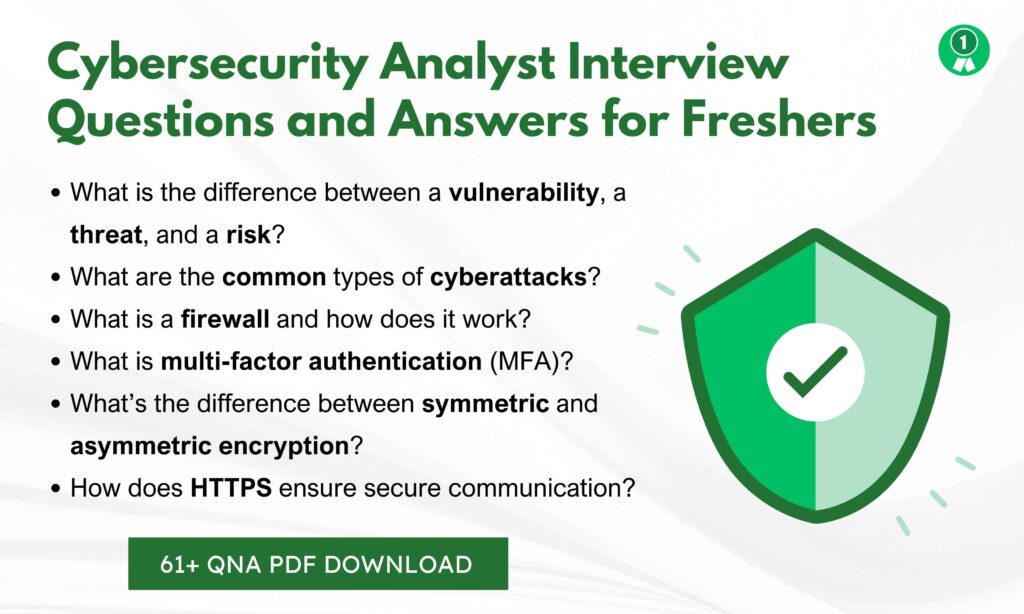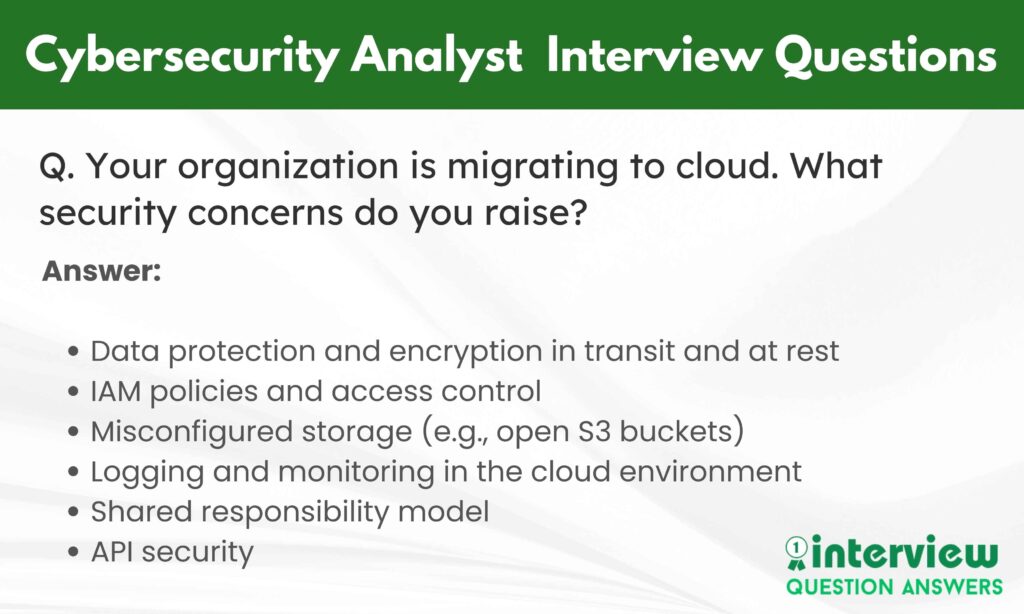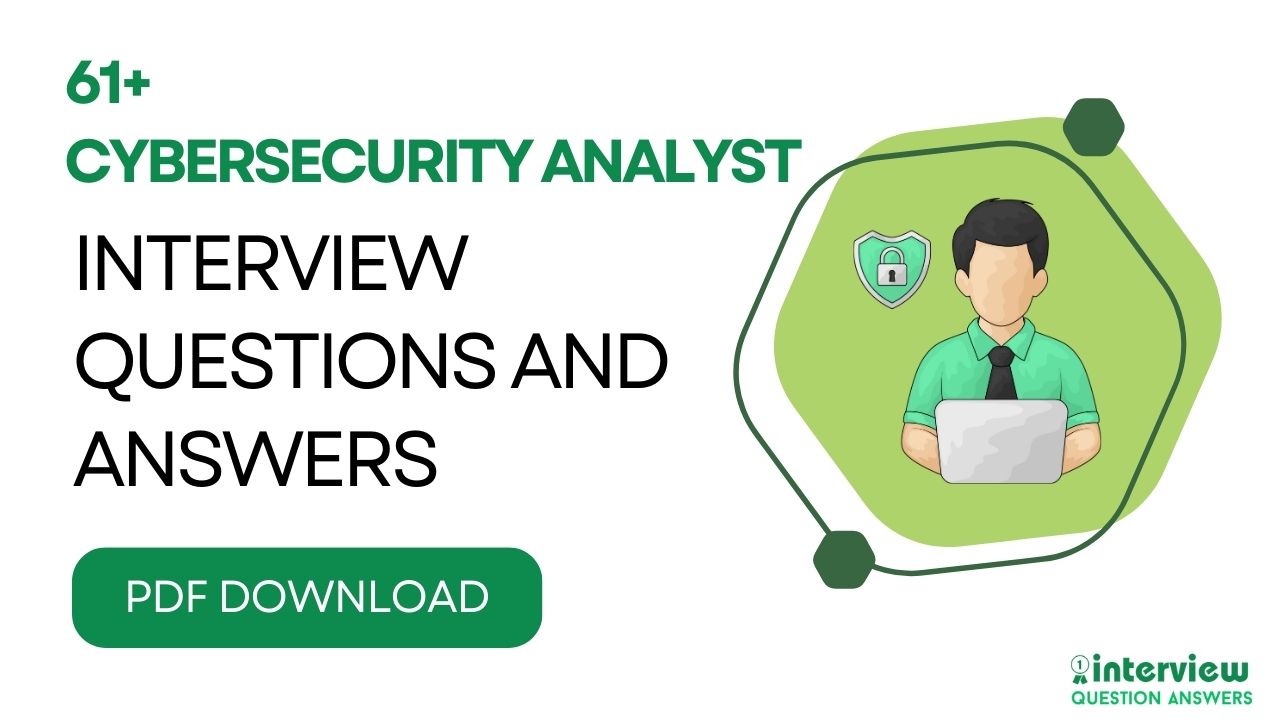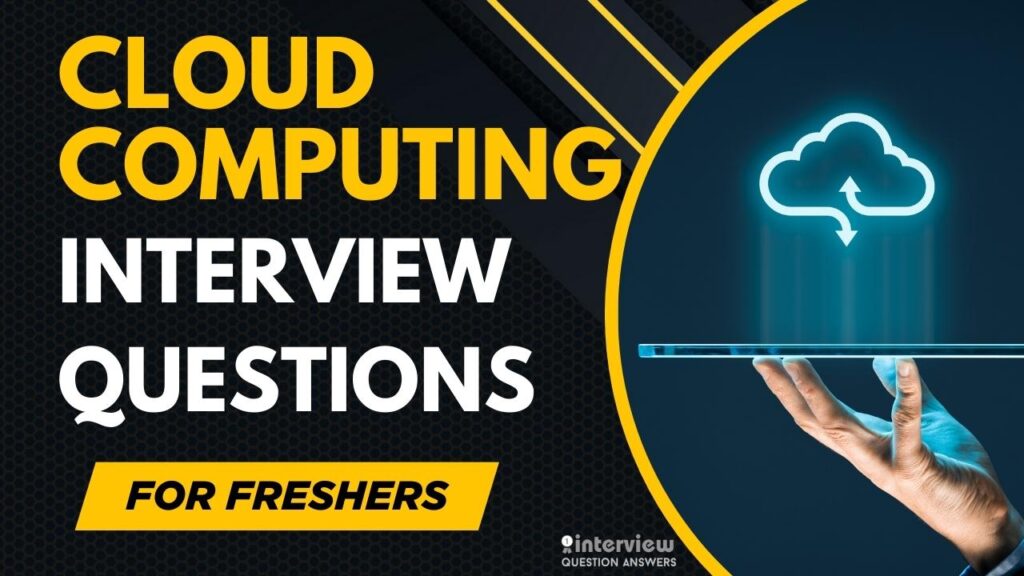A Cybersecurity Analyst is an entry-level professional who helps protect an organization’s computer systems, networks, and data from cyber threats such as hacking, viruses, and data breaches. In simple terms, they act like digital bodyguards, constantly monitoring systems for any unusual activity and ensuring security policies are followed.
To excel in this position, a Cybersecurity Analyst should possess a range of technical knowledge, including familiarity with security protocols, network architecture, and various cybersecurity tools. Knowledge of Python and data visualization tools can further enhance their ability to analyze complex data and present insights effectively.
Preparing for a Cybersecurity Analyst interview is essential, as it helps candidates understand the expectations of the role and the skills required. A well-prepared candidate stands out by showing they understand not just the theory, but also how to apply it in real-world situations.
Here, we are sharing many popular interview questions and answers to help you prepare better for your upcoming interview. Also we are sharing a PDF download so you can also prepare offline.
Table of Contents
20 Junior Cybersecurity Analyst Interview Questions and Answers for Freshers PDF
1. What is the difference between a vulnerability, a threat, and a risk?
Answer:
- Vulnerability: A flaw or weakness in a system (e.g., unpatched software).
- Threat: A potential danger that could exploit a vulnerability (e.g., hacker or malware).
- Risk: The potential damage that could result when a threat exploits a vulnerability.
2. What is the CIA triad in cybersecurity?
Answer:
CIA stands for:
- Confidentiality: Ensuring information is accessible only to those authorized.
- Integrity: Ensuring data is accurate and has not been tampered with.
- Availability: Ensuring systems and data are accessible when needed.
3. What are the common types of cyberattacks?
Answer:
Some common types include:
- Phishing
- Ransomware
- Denial-of-Service (DoS)
- Man-in-the-Middle (MitM)
- SQL Injection
- Zero-day Exploits
4. What is the difference between IDS and IPS?
Answer:
- IDS (Intrusion Detection System): Monitors and alerts for suspicious activity.
- IPS (Intrusion Prevention System): Detects and actively blocks threats.
5. What is a firewall and how does it work?
Answer:
A firewall is a network security device that monitors and filters incoming and outgoing traffic based on predefined rules. It acts as a barrier between a trusted network and an untrusted one.
6. How do you identify a phishing email?
Answer:
Indicators of phishing emails include:
- Generic greetings
- Urgent or threatening language
- Suspicious links or attachments
- Email addresses that don’t match the sender’s name
7. What is multi-factor authentication (MFA)?
Answer:
MFA is a security process that requires users to provide two or more verification factors to access a resource. Examples include:
- Password + OTP
- Password + biometric scan
8. What is port scanning?
Answer:
Port scanning is a technique used to identify open ports and services running on a host. It is often used in reconnaissance by attackers and also by defenders during vulnerability assessments.
9. Can you name a few tools used in cybersecurity?
Answer:
| Tool | Purpose |
|---|---|
| Wireshark | Network protocol analyzer |
| Nmap | Network scanning and port detection |
| Snort | Intrusion detection system (IDS) |
| Burp Suite | Web vulnerability scanner |
| Metasploit | Penetration testing framework |
10. What is social engineering in cybersecurity?
Answer:
Social engineering is the act of manipulating people into revealing confidential information or performing actions that compromise security, such as clicking malicious links or giving away passwords.
Also Check: Cyber Security Analyst Interview Questions for Freshers
11. What’s the difference between symmetric and asymmetric encryption?
Answer:
- Symmetric Encryption: Same key for encryption and decryption.
- Asymmetric Encryption: Uses a public key to encrypt and a private key to decrypt (e.g., RSA).
12. How does HTTPS ensure secure communication?
Answer:
HTTPS uses SSL/TLS protocols to encrypt communication between the browser and server. It ensures confidentiality and integrity of the transmitted data using public-key encryption.
13. What is a Zero-Day vulnerability?
Answer:
A Zero-Day is a security flaw that is unknown to the vendor and has no official patch. Hackers can exploit it before it’s discovered and fixed, making it highly dangerous.
14. What are logs, and why are they important in cybersecurity?
Answer:
Logs record events or activities happening in a system or network. They are essential for:
- Monitoring for suspicious behavior
- Auditing
- Troubleshooting
- Forensic analysis after an incident
15. What is network segmentation, and why is it useful?
Answer:
Network segmentation involves dividing a network into smaller segments to limit the spread of attacks and improve control. Example: separating internal user networks from critical servers.
16. What is lateral movement in cyberattacks?
Answer:
Lateral movement refers to a hacker’s actions after gaining initial access, where they move across the network to find and access critical systems or data.
17. What is the principle of least privilege?
Answer:
It’s a security concept that gives users the minimum level of access necessary to perform their job functions. This reduces the potential damage from compromised accounts.
18. How do you stay updated on cybersecurity threats?
Answer:
- Follow security blogs (Krebs on Security, ThreatPost)
- Use threat intelligence platforms (AlienVault, Recorded Future)
- Subscribe to vulnerability databases (CVE, NVD)
- Attend webinars and join communities like OWASP or Reddit security forums
19. What would you do if you detect a potential security breach?
Answer:
- Notify the security team immediately
- Isolate affected systems
- Begin incident response process
- Document the event and preserve logs
- Support forensic investigation
- Apply fixes and preventive measures
20. What are some key components of an incident response plan?
Answer:
A good incident response plan includes:
- Preparation
- Detection and analysis
- Containment, eradication, and recovery
- Post-incident review (lessons learned)

Also Check: Data Analyst Interview Questions and Answers
Cybersecurity Analyst Interview Questions and Answers for Experience
1. How do you conduct a security risk assessment?
Answer:
A typical risk assessment involves:
- Identifying assets and their value
- Identifying potential threats and vulnerabilities
- Analyzing the likelihood and impact of those threats
- Prioritizing risks
- Recommending mitigation strategies
2. What is the difference between a false positive and a false negative in IDS?
Answer:
- False Positive: An alert is triggered for non-malicious activity
- False Negative: A real attack occurs but goes undetected
Experienced analysts aim to minimize both by fine-tuning detection rules and signatures.
3. How do you secure endpoints in a hybrid work environment?
Answer:
- Deploy EDR/XDR solutions
- Enforce device encryption and patch management
- Implement Zero Trust policies
- Use VPN or secure tunnels
- Apply MFA and identity access control
4. Explain the steps of a typical incident response lifecycle.
Answer:
According to NIST:
- Preparation
- Detection and Analysis
- Containment
- Eradication
- Recovery
- Post-Incident Review
5. What are the key differences between SOC Tier 1, Tier 2, and Tier 3 analysts?
Answer:
| SOC Tier | Responsibilities |
|---|---|
| Tier 1 | Monitors alerts and performs initial triage |
| Tier 2 | Conducts deeper analysis, validates threats, and initiates containment |
| Tier 3 | Engages in threat hunting, malware analysis, and incident coordination |
6. How do you detect and prevent lateral movement?
Answer:
- Monitor east-west traffic
- Use network segmentation and access controls
- Analyze Windows event logs and PowerShell activity
- Deploy behavioral detection tools like UEBA
7. What is the MITRE ATT&CK framework and how do you use it?
Answer:
MITRE ATT&CK is a knowledge base of adversary behaviors based on real-world observations. Analysts use it to:
- Map incidents to known tactics and techniques
- Improve detection rules
- Simulate adversary behavior for red teaming
8. What are Indicators of Compromise (IOCs)? Give examples.
Answer:
IOCs are artifacts that suggest a system may be compromised. Examples:
- Suspicious IP addresses
- Malware hashes
- Unusual registry changes
- Unexpected outbound traffic
9. How do you analyze a suspicious executable file?
Answer:
- Run through sandbox environments
- Examine with tools like PEStudio, strings, or Dependency Walker
- Check behavior using Process Monitor
- Verify with VirusTotal, Any.run, or Hybrid Analysis
10. Explain the concept of threat intelligence. How do you use it?
Answer:
Threat intelligence is information about potential or current threats. It’s used to:
- Enrich alerts with context
- Proactively block IOCs
- Understand attacker TTPs
- Tailor defenses to current threat landscape
11. What is the difference between symmetric and asymmetric encryption? Where would you use each?
Answer:
- Symmetric: Same key for encryption/decryption (used for fast data encryption, e.g., AES).
- Asymmetric: Public and private key (used for secure key exchange, e.g., TLS handshake).
12. How do you handle a ransomware outbreak?
Answer:
- Isolate affected systems immediately
- Notify internal/external stakeholders
- Analyze ransomware strain
- Restore from clean backups if possible
- Conduct forensics to understand attack vector
- Report to authorities as required
13. How do you use SIEM for threat detection?
Answer:
- Aggregate logs from multiple sources
- Correlate events using rules or machine learning
- Create dashboards and alerts
- Investigate incidents via timeline reconstruction
Popular SIEM tools: Splunk, QRadar, LogRhythm, Microsoft Sentinel
14. What is a DMZ, and why is it used?
Answer:
A DMZ (Demilitarized Zone) is a physical or logical subnetwork that exposes external-facing services (like web or email servers) to the internet while isolating them from the internal network. It minimizes the impact of a breach.
15. What’s the difference between a vulnerability scan and a penetration test?
Answer:
- Vulnerability Scan: Automated, checks for known issues
- Penetration Test: Simulates real attacks to exploit vulnerabilities
Pen tests are more manual, deeper, and often scoped.
16. How would you secure a cloud-based infrastructure?
Answer:
- Use cloud-native firewalls and identity controls
- Enable logging and monitoring (e.g., AWS CloudTrail)
- Enforce least privilege and IAM best practices
- Apply CSPM (Cloud Security Posture Management)
- Regularly review security groups and policies
17. What is privilege escalation and how can you detect it?
Answer:
Privilege escalation occurs when an attacker gains higher access than intended. Detection methods include:
- Monitoring for unusual user activity
- Anomalies in event logs (e.g., new admin accounts)
- Use of known escalation tools like Mimikatz
18. Describe how DNS can be used in a cyberattack.
Answer:
- DNS Tunneling: Using DNS queries to exfiltrate data
- DNS Spoofing: Redirecting users to malicious domains
- Typosquatting: Registering similar domain names to deceive users
Mitigation includes DNS filtering, DoH blocking, and anomaly detection.
19. How do you perform log analysis during an investigation?
Answer:
- Correlate logs across systems (SIEM, endpoint, network)
- Look for anomalies in user behavior or traffic patterns
- Filter events by time, user, IP, or process
- Use regex and scripting to automate large-scale parsing
20. How would you design a layered security architecture?
Answer:
A defense-in-depth strategy includes:
- Network Security (firewalls, segmentation)
- Endpoint Security (EDR, patching)
- Application Security (WAF, code reviews)
- Identity and Access Management (MFA, SSO)
- Monitoring and Response (SIEM, SOAR)
Also Check: SOC Analyst Interview Questions
Python Cybersecurity Analyst Interview Questions and Answers
1. How is Python used in cybersecurity?
Answer:
Python is used for:
- Writing automation scripts for log analysis
- Building security tools (port scanners, brute forcers)
- Parsing and analyzing packet data
- Creating malware analysis tools
- Interacting with APIs (like VirusTotal, Shodan) for threat intelligence
2. Write a Python script to find all open ports on a given host.
Answer:
import socket
target = '127.0.0.1'
ports = range(1, 1025)
for port in ports:
sock = socket.socket(socket.AF_INET, socket.SOCK_STREAM)
socket.setdefaulttimeout(0.5)
result = sock.connect_ex((target, port))
if result == 0:
print(f"Port {port} is open")
sock.close()3. How do you parse a log file in Python?
Answer:
Use built-in file handling and string manipulation:
with open("system.log", "r") as f:
for line in f:
if "ERROR" in line:
print(line.strip())
You can also use libraries like re for regex-based filtering or for pandas structured logs.
4. What Python libraries are commonly used in cybersecurity?
Answer:
- Scapy – packet crafting and analysis
- Requests – HTTP requests and API calls
- Socket – networking and scanning
- Hashlib – hashing and integrity checks
- Os / Subprocess – system-level tasks
- Re – regex for log and string parsing
5. How would you use Python to hash a password?
Answer:
import hashlib
password = "secure123"
hashed = hashlib.sha256(password.encode()).hexdigest()
print(hashed)This ensures the password is stored as a hashed string instead of plaintext.
6. How can you automate sending alerts for suspicious activity using Python?
Answer:
You can monitor logs and send email or webhook alerts:
import smtplib
def send_alert(message):
server = smtplib.SMTP('smtp.example.com', 587)
server.starttls()
server.login('your_email@example.com', 'password')
server.sendmail('your_email@example.com', 'admin@example.com', message)
server.quit()
# Example usage
send_alert("Suspicious login attempt detected.")More Python Questions here: Python Interview Questions and Answers
Scenario Based Cybersecurity Interview Questions and Answers
1. A user reports their system is running slow and files are being encrypted. What do you do?
Answer:
- Isolate the affected system from the network immediately
- Confirm if it’s ransomware by checking file extensions and ransom notes
- Check logs and running processes
- Identify the infection source (email, drive, etc.)
- Inform the incident response team
- If backups are available, wipe and restore system
- Document and report the incident
2. You receive a high number of failed login attempts from a single IP address. How do you handle it?
Answer:
- Block the IP temporarily using a firewall or IDS/IPS
- Check for successful logins from the same IP
- Review access logs for targeted accounts
- Notify affected users and enforce password resets if needed
- Implement account lockout or CAPTCHA policies
- Update detection rules to prevent future brute-force attempts
3. Your SIEM alerts that a critical server is communicating with a blacklisted IP. What’s your next step?
Answer:
- Investigate the server’s current processes and open connections
- Check logs for timeline and commands executed
- Capture traffic (using Wireshark or tcpdump)
- Isolate the server if malicious activity is confirmed
- Analyze communication content
- Begin incident response and report findings
4. During a penetration test, you find an outdated web server version with known vulnerabilities. What do you recommend?
Answer:
- Immediately notify the system owner or relevant team
- Suggest patching or upgrading the web server
- If a patch isn’t available, recommend virtual patching or disabling vulnerable features
- Re-assess after mitigation
- Document the finding with CVE references and risk ratings
5. Your organization is migrating to cloud. What security concerns do you raise?
Answer:
- Data protection and encryption in transit and at rest
- IAM policies and access control
- Misconfigured storage (e.g., open S3 buckets)
- Logging and monitoring in the cloud environment
- Shared responsibility model
- API security

6. A developer commits sensitive credentials to a public GitHub repo. What actions do you take?
Answer:
- Revoke the exposed credentials immediately
- Alert the developer and remove the file or repo history
- Search GitHub and other sources for possible leaks
- Enable secret scanning tools (e.g., GitGuardian, GitHub Advanced Security)
- Provide training on secure development practices
7. How would you secure remote access for employees working from home?
Answer:
- Enforce VPN usage with encryption
- Implement Multi-Factor Authentication (MFA)
- Monitor remote login patterns
- Use endpoint protection and device compliance policies
- Limit access using Zero Trust principles
- Apply patching and device hardening guidelines
8. You detect multiple failed MFA attempts from a legitimate user account. What could be happening and what’s your response?
Answer:
- Possible phishing attempt or credential stuffing
- Verify with the user to rule out false alarms
- Monitor for successful logins or IP changes
- Enforce session logouts or temporary account lock
- Strengthen monitoring and alerting for further misuse
9. A business-critical application has a known vulnerability, but patching will cause downtime. What do you suggest?
Answer:
- Evaluate the severity of the vulnerability (e.g., is it remotely exploitable?)
- Implement compensating controls (WAF rules, network segmentation)
- Schedule patching during off-peak hours
- Monitor the system closely for any exploit attempts
- Document the risk and mitigation plan for compliance
10. You suspect insider activity due to unusual file transfers at odd hours. How do you proceed?
Answer:
- Analyze logs for access patterns and destinations
- Use DLP tools to track sensitive file movement
- Interview the user or relevant team if needed
- Notify HR and compliance teams for coordinated investigation
- If malicious intent is found, follow termination and legal protocols
- Review access control policies and reduce privileges if excessive
Most Common SOC Analyst Interview Questions
1. What is the role of a SOC Analyst?
Answer:
A SOC Analyst monitors, detects, investigates, and responds to cybersecurity incidents in real-time. They use tools like SIEM, EDR, and IDS/IPS to ensure continuous security monitoring and threat response.
2. What tools do SOC Analysts commonly use?
Answer:
- SIEM Tools: Splunk, QRadar, ArcSight
- EDR Tools: CrowdStrike, SentinelOne, Carbon Black
- Packet Analyzers: Wireshark
- Threat Intelligence Platforms: MISP, VirusTotal
- Ticketing Systems: ServiceNow, Jira
3. How does a SOC Analyst respond to a malware alert?
Answer:
- Validate the alert (false positive or not)
- Isolate the infected system
- Analyze the malware behavior and origin
- Check for lateral movement or data exfiltration
- Initiate containment, eradication, and recovery steps
- Document and update playbooks
4. What is a SIEM and how does it work?
Answer:
SIEM (Security Information and Event Management) collects and analyzes log data from various sources (firewalls, servers, endpoints). It correlates events and generates alerts for suspicious behavior.
5. How do you differentiate between a true positive and a false positive?
Answer:
- True Positive: Real malicious activity detected correctly
- False Positive: Benign activity mistakenly flagged as malicious
Analysts use context (IP reputation, user behavior, event correlation) to verify alert accuracy.
6. What are the tiers in a SOC and how do they differ?
Answer:
- Tier 1: Alert monitoring and triage
- Tier 2: Deep analysis and incident validation
- Tier 3: Threat hunting, root cause analysis, and advanced forensics
- Tier 4 (optional): Incident response leadership or threat intelligence team
7. What is a use case in SIEM?
Answer:
A use case defines a specific scenario the SIEM should detect. For example:
- Detecting multiple failed logins followed by a successful one
- Login from an unusual country
It includes logic, thresholds, and alerts to detect that pattern.
8. What are common KPIs for a SOC?
Answer:
- Mean Time to Detect (MTTD)
- Mean Time to Respond (MTTR)
- Number of Incidents Handled
- False Positive Rate
- Incident Closure Rate
FAQs: Cybersecurity Analyst Interview
What is the role of a Cybersecurity Analyst?
A Cybersecurity Analyst is responsible for protecting an organization’s computer systems and networks from cyber threats. They monitor security systems, analyze data for vulnerabilities, and implement security measures to safeguard sensitive data.
What challenges might I face during a Cybersecurity Analyst interview?
During the interview, you may face questions that assess your technical skills, problem-solving abilities, and experience with cybersecurity tools. You might also be asked to demonstrate how you would handle real-world security breaches or vulnerabilities.
What is the salary range for Cybersecurity Analysts in the USA?
The salary for Cybersecurity Analysts in the USA can vary widely based on experience, location, and the specific organization. On average, entry-level positions may start at around $70,000 per year, while experienced analysts can earn upwards of $120,000 annually.
Which companies are known for hiring Cybersecurity Analysts?
Many tech companies, financial institutions, and government agencies actively hire Cybersecurity Analysts. Top employers include companies like IBM, Cisco, Deloitte, and various government entities that prioritize data security.
How can I prepare for a Cybersecurity Analyst interview?
To prepare for a Cybersecurity Analyst interview, familiarize yourself with common cybersecurity tools and concepts. Review the latest cybersecurity threats and trends, and practice answering analytical questions that may involve data protection scenarios.
What types of data do Cybersecurity Analysts work with?
Cybersecurity Analysts work with various types of data, including logs from security systems, network traffic data, and threat intelligence reports. They analyze this data to identify potential threats and ensure the integrity of the organization’s data.
What skills are essential for a Cybersecurity Analyst?
Essential skills for a Cybersecurity Analyst include proficiency in network security, knowledge of cybersecurity frameworks, experience with security tools, and strong analytical skills to analyze complex data sets for threats.
Conclusion
This guide equips both freshers and seasoned professionals with everything needed to ace a Cybersecurity Analyst interview from core concepts and advanced technical questions to Python scripting, real‑world scenarios, and common SOC inquiries.
It explains the job’s importance, sharpens your analytical thinking, and offers a downloadable PDF so you can review offline and walk into your interview confident and prepared.







